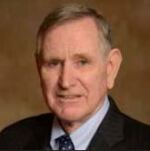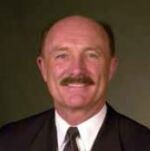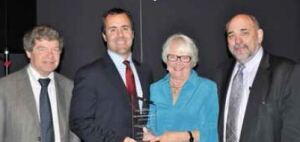Award winners of 2017
November 23, 2017
Welcome to The Best of 2017.
Every year, HealthCare Business News publishes a summary of award recipients from top health care associations. If an association you belong to isn’t highlighted in the following pages, let us know and we’ll consider them for inclusion in next year’s issue.
AAMI
The AAMI Foundation's Laufman-Greatbatch Award
This is AAMI's most prestigious award. Named after two pioneers in the field — Harold Laufman, M.D. and Wilson Greatbatch, Ph.D. — this highly regarded award honors an individual or group that has made a unique and significant contribution to the advancement of health care technology and systems, service, patient care or patient safety.
This year's award was presented posthumously to Victoria Hitchins, research microbiologist for the Food and Drug Administration's Center for Devices and Radiological Health. She was killed in a car crash last summer. During her more than 35 years at the FDA, Hitchins helped to improve the regulation of medical devices — specifically in the areas of sterilization, reprocessing and reuse — through her research. And as a longtime participant in AAMI's standards program, cochair of the AAMI Sterilization Standards Committee and leader of the U.S. delegation to ISO/TC 198, which focuses on the sterilization of health care products, Hitchins was a trailblazer for medical device standardization and harmonization worldwide.
ACR
ACR Gold Medals
The American College of Radiology’s highest honor, the ACR Gold Medal, is awarded annually to radiologists, radiation oncologists, medical physicists and other scientists for their distinguished and extraordinary service to the ACR or to the discipline of radiology.
Bruce J. Hillman, M.D., FACR, is a professor of radiology and medical imaging and public health sciences and former chair of radiology at the University of Virginia, Charlottesville, founding and current editor-in-chief of the Journal of the American College of Radiology and a distinguished health services researcher and clinical trialist. The author of the seminal investigative work on self-referral and inappropriate utilization developed new methods of data analysis and interpretation, paving the way for the application of health services research methodologies to imaging. He is the founding chair of the American College of Radiology Imaging Network, which conducted landmark studies demonstrating the value of digital mammography for breast cancer screening and computed tomography for colon and lung cancer screening.
John A. Patti, M.D., FACR, is a senior lecturer in radiology at Harvard Medical School and thoracic radiologist at Massachusetts General Hospital, both in Boston. During his ACR leadership tenure, he championed and facilitated many critical and acclaimed ACR programs and initiatives, including the Radiology Leadership Institute, the Harvey L. Neiman Health Policy Institute, the American Institute of Radiologic Pathology, ACR Select and created the ACR Commission on International Relations. An expert in imaging economics and health policy, Patti widely communicated the myriad and complicated financial issues related to radiology, advocating for fair payment policies and the understanding of the critical value radiologists contribute to patient care.
Jeffrey C. Weinreb, M.D., FACR, is a professor and vice chair for strategic planning in the department of radiology and biomedical imaging at Yale-New Haven Hospital/Yale School of Medicine. Weinreb is considered a pioneer in developing clinical magnetic resonance imaging as a highly sensitive imaging technique with ever-increasing utility. He has made significant contributions in quality and safety, MR contrast agents and abdominal, obstetrical and prostatic MR. He has been a strong advocate for maintaining and further developing the ACR Appropriateness Criteria and championed participation in the American Board of Internal Medicine Choosing Wisely initiative.
AHRA
AHRA Gold Awards
The award is the highest honor AHRA can bestow upon its members. It is given to members who have made significant contributions to the association and, thus, to the profession of health care administration. Nominations for the Gold Award come from the membership and any member may nominate a candidate. All members of AHRA are eligible for award consideration.
Russell L. Cain, CRA, FAHRA, has been an active AHRA member since 2000. He earned his CRA in 2002 and achieved Fellow status in 2016.
Cain has volunteered for many roles within AHRA. He was elected to the AHRA board of directors in 2011. He served as a director from 2011-2014, and again from 2015-2016. During his time on the board, he was part of the Benchmarking Project Committee, Strategic Plan Committee and AHRA Finance Committee.
He has served the association in many capacities and continues to do so. Cain is present at every AHRA event. He encourages new members to become engaged while maintaining strong connections to seasoned members.
ARRS
The ARRS Gold Medal for Distinguished Service
The ARRS Gold Medal is the American Roentgen Ray Society’s highest honor awarded to recipients for distinguished service to radiology. Two recipients were named this year.
Norman J. Beauchamp Jr. became dean of the Michigan State University College of Human Medicine in October. Prior to his MSU appointment, Dr. Beauchamp was a professor and chair of the department of radiology at the University of Washington, Seattle, a position he assumed in 2002. While there, he served as vice chair and chair of the UW Faculty Senate, was president of the clinical practice of 1,600 physicians employed by the university and was medical director of the Seattle/King County Clinic, which provided dental, vision and medical care to thousands of low-income and uninsured patients. He also served as professor of neurological surgery and industrial and systems engineering at UW.
Beauchamp received his bachelor of science from MSU and was selected as one of the university’s top 25 of 10,000 undergraduate students. He received his master of health science from the Johns Hopkins School of Public Health in Baltimore. As the second college of human medicine graduate to become dean, Beauchamp spent his last two years of medical school in Grand Rapids, Mich., and subsequently completed his surgical internship at Blodgett Hospital and Saint Mary’s Hospital, both in Grand Rapids. After completing his residency in radiology, and two fellowships in neuroradiology and interventional neuroradiology at Johns Hopkins University School of Medicine, Dr. Beauchamp joined the faculty in 1996. While at Johns Hopkins, he served as vice chair and interim chair of clinical operations.
As a diagnostic neuroradiologist and neurointerventional radiologist, Beauchamp focused on developing improved ways to prevent, predict, diagnose and treat patients suffering from stroke. He directed the National Institutes of Health–funded Epidemiologic Studies Image Analysis Center at Johns Hopkins and UW, which included nearly 6,000 study participants. An influential scientist and national leader in the radiology community, Dr. Beauchamp has received numerous awards for his research and has published more than 100 peer-reviewed papers. His research focuses on developing advanced MRI techniques to extend the treatment window for acute ischemic stroke and to identify risk predictors for stroke and dementia.
Beauchamp is chair of the International Outreach Committee of the American Roentgen Ray Society and on the board of directors of the Society of Chairs of Academic Radiology Departments and is past president of both those organizations. He was chair of the Radiology Research Alliance and the Coalition for Imaging and Bioimaging Research.
Robert A. Novelline is professor emeritus of radiology at Harvard Medical School and former director of the Massachusetts General Hospital Emergency Radiology Division. He is also the former director of the MGH Emergency Radiology Fellowship Program. Novelline received his undergraduate degree from McGill University in Montreal, and his medical degree from Boston University. After finishing a radiology residency at MGH, he completed fellowships in vascular/interventional radiology and radiology education before his appointment in 1982 as director of the newly formed ERD.
He installed one of the first CT scanners in an emergency imaging facility and pioneered investigations of CT diagnosis of trauma and acute nontraumatic emergencies. Novelline began one of the first fellowships in emergency radiology and is a founding member of the American Society of Emergency Radiology. He received ASER’s Gold Medal in 2000 and its Winged Caduceus Award in September 2015.
Novelline directed both the HMS core and advanced medical student radiology clerkships at MGH from 1975 until 2012. He developed medical student curricula in radiology that have been widely adopted at other medical schools. He is a founding member and first president of the Alliance of Medical Student Educators in Radiology. In 2007, he received the Radiological Society of North America’s Outstanding Educator Award, and in 2012 the AMSER Excellence in Education Award. He is the author of three editions of Squire’s Fundamentals of Radiology, and recently finished the seventh edition. In 2015, he received the Gold Medal of the Association of University Radiologists and the Gold Medal of the RSNA.
Throughout his career, the Boston native has traveled the world as a visiting professor at universities such as: Karolinska Institutet, Stockholm, Sweden; Ludwig Maximilians-Universität Munchen Medical School, Munich, Germany; Royal Australian and New Zealand College of Radiologists, New Zealand Branch Annual Scientific Meeting, Auckland, New Zealand; and many universities across the U.S. He has reviewed for the Journal of Trauma, Journal of the American College of Radiology and the European Journal of Radiology, among others.
Novelline's major research interests are evaluation of multidetector CT in trauma diagnosis, including the design and testing of new trauma protocols, 3-D multidetector CT of skeletal and vascular injuries and evaluation of new multidetector CT techniques in the diagnosis of nontraumatic abdominal emergencies (appendicitis, diverticulitis, ureteral stone disease and bowel obstruction). In education, his interests are the development and design of new radiology instructional programs, including textbooks, slide-tape, CD-ROM and Internet courses for medical students.
ASRT
Jean I. Widger Distinguished Author Award
The award honors the best peer-reviewed articles published in ASRT’s scientific journals. The award is named after longtime Radiologic Technology editor Jean I. Widger.
Quentin T. Moore, M.P.H., R.T.(R)(T)(QM), earned the Widger award for his article “An Interdisciplinary Approach to Improving Radiation Protection in Digital Radiography.”
Moore is director of the Bachelor of Science in medical imaging and associate of science in radiologic technology programs for Mercy College of Ohio in Toledo.
His study aimed to determine which improvement approaches can be incorporated in digital radiography to ensure radiation protection practices are based on current equipment capabilities. He performed a literature review to understand how radiation protection, quality improvement, evidence-based practice and interdisciplinary approaches come into play with digital radiography. He found that the transition from film-screen to digital radiography has resulted in confusion in applying appropriate techniques and abiding by the as low as reasonably achievable concept. Thus, Moore recommended radiologic technologists and others working in medical imaging continually review and incorporate clinically effective research into practice. He argues that increasing interdisciplinary quality and implementing practice improvement projects will help facilities achieve radiation-based benchmarks to improve imaging practices.
Harold Silverman Distinguished Author Award
The award is named in honor of radiation therapist Harold Silverman, an advocate for accreditation of radiation therapy educational programs. This award also honors the best peer-reviewed articles published in ASRT’s Radiation Therapist.
Linda Schinman, M.B.A., R.T.(T)(CMD) and Megan Trad, Ph.D., M.S.R.S., R.T.(T), earned the Silverman Award for their article, “Incorporating VERT Technology Into the Radiation Therapy Classroom: A Case Study.”
Schinman is associate professor for the radiation therapy program, as well as the program chair of radiation therapy and medical dosimetry, for Bellevue College in Bellevue, Wash. Trad is associate professor for the radiation therapy program at Texas State University, San Marcos Texas.
They pursued this study after noticing a disconnect between classroom and clinic regarding complex treatment procedures. The divide often exists because it is difficult to teach complicated procedures in a lecture or classroom format, and each clinic has different expectations of students. To help address the issue, the authors designed a case study to assess student learning with Virtual Environment Radiation Therapy technology in a radiation therapy course. According to their research, students found the practice of determining setup errors and making the corrections was most helpful in developing and improving their skills. This research also demonstrated improved technical communications and competence after using VERT technology, consequently improving safety and quality in the radiation workplace. Although the authors know simulated practice cannot replace working with real patients, 3-D VERT technology can help bridge the gap between the classroom and the clinic.
ASTRO
ASTRO Gold Medal
ASTRO’s Gold Medal, first awarded in 1977, is bestowed annually on up to three ASTRO members who have made outstanding contributions to the field of radiation oncology, including work in research, clinical care, teaching and service. Including this year’s awardees, only 78 of ASTRO’s more than 10,000 members have received the Gold Medal award.
Candidates must be nominated by one active member of ASTRO and receive letters of support from two additional active members of ASTRO, detailing the nominee’s impact on the advancement of radiation oncology. Nominees may be from any of the scientific disciplines represented in ASTRO, including radiation oncology, biology and physics.
Søren M. Bentzen, DSc, Ph.D., is passionate about science and math. This passion has led to more than 400 published articles, approximately 1,400 scientific citations per year, more than 300 invited talks at international scientific meetings, 54 visiting professorships, 15 trial steering committee memberships and four clinical trial or research group chairmanships.
His nominating letters for the ASTRO Gold Medal contained descriptions of Bentzen like “leader in the field,” “one of the top scientists” and “preeminent researcher in the world.”
Bentzen is a professor and director of the Division of Biostatistics and Bioinformatics in the Department of Epidemiology and Public Health at the University of Maryland School of Medicine in Baltimore. He holds a secondary faculty appointment there as a professor of radiation oncology and is a member of the University of Maryland Marlene and Stewart Greenebaum Comprehensive Cancer Center.
After earning his doctorate in medicine and medical physics from the University of Aarhus in Denmark, Bentzen was a visiting scientist at the University of Texas MD Anderson Cancer Center from 1987–1988.
From there, he held appointments at the University of Aarhus, the Gray Laboratory and the University of Wisconsin before taking the post at the University of Maryland.
“I came into this field at a great time,” said Bentzen. “Radiation therapy has undergone quite a renaissance. The progress we’ve made in understanding radiation biology and molecular cancer biology has revolutionized the way radiation oncology is practiced.”
Bentzen has played a large role in that understanding. For years, he has studied the long-term effects of normal tissue toxicity as a result of radiation treatment. According to one nominating letter, “Søren’s work on normal tissue injury is probably the most important work of this type in the radiation oncology literature.”
This work led him to consider dose-fractionation schedules and how radiation therapy might be best tailored to maximize tumor control while minimizing toxicity to normal tissue. In another nominating letter, the writer concludes, “His work on modeling and fractionation have been essential to how we can use radiation safely in the clinic.”
Bentzen is focusing on a new frontier of cancer care: personalized medicine using big data to better tailor treatments. He said, “At the end of the day, it’s about optimizing the treatment for each individual. There are so many new possibilities that we didn’t have 15 years ago. With population-level registry data and electronic health records and then with what we know about genomics — combining data and knowledge across all of those fields is challenging and also very exciting.”
Louis B. Harrison, M.D., FASTRO, is a renaissance man of radiation oncology. From developing a customized high-dose-rate (HDR) radiation therapy applicator to writing a textbook to leading multidisciplinary teams, Harrison’s accomplishments in the field are varied and far-reaching.
Harrison began his medical career in surgery, receiving the Clarence Dennis Society Prize for Surgical Scholarship for the State University of New York (SUNY) Downstate College of Medicine’s class of 1982. But he soon switched paths to radiation oncology, saying, “I thought radiation oncology had the best opportunity for curing cancer while optimizing functional outcome and quality of life.”
His surgical background has proven effective for forging partnerships with clinicians across all oncologic specialties. As more people see the value in multidisciplinary cancer care, Harrison gladly welcomes them to the club. He has been a leader in comprehensive cancer care for decades.
“Radiation oncology is one of those specialties that mixes strongly with many other areas — surgery, medical oncology, imaging, pathology, genomics, immunology, biology, mathematics — but none of us can cure cancer by ourselves,” said Harrison.
From 1999–2014, he served as the physician-in-chief of Continuum Cancer Centers of New York and was instrumental in developing multidisciplinary programs across all cancer sites in the Continuum health care system. Under his leadership, the cancer program received Gold Level Accreditation for the Continuum Network from the American College of Surgeons Commission on Cancer, one of the few health systems to earn this level of accreditation.
Harrison’s desire to treat cancer while preserving function led him to specialize in head and neck and skin cancers. “In head and neck and skin cancer, radiation therapy is used as a primary modality. The aspiration to achieve excellent functional and cosmetic outcomes is very important to patients.”
Harrison is an authority in the field of head and neck and skin cancer as he literally wrote the book on it. Harrison is the lead editor of the major textbook Head and Neck Cancer: A Multidisciplinary Approach, currently in its fourth edition. According to one of Harrison’s nominating letters, “his contributions in brachytherapy and intraoperative radiation therapy have shaped the field.”
Developing novel therapies and new ways to deliver treatment has always been a motivator for Harrison. He was one of the first investigators to combine concomitant chemotherapy with radiation therapy for head and neck cancer, now a standard of care. Along with Lowell Anderson, DSc, and Felix Mick, Harrison created the Harrison Anderson Mick Applicator, a medical device used to deliver HDR brachytherapy or HDR IORT treatments.
Harrison brought his entrepreneurial spirit to the board of directors of ASTRO from 2005–2009. As president and chair, he advocated for a name change for the Society to stress the importance of cancer care to its members. At ASTRO’s 50th annual meeting in Boston in September 2008, the membership voted to change its name from the American Society for Therapeutic Radiology and Oncology to its current name, the American Society for Radiation Oncology.
After spending most of his career in New York, he joined the H. Lee Moffitt Cancer Center and Research Institute in Tampa, Fla., in 2014. He serves Moffitt as the chair of radiation oncology as well as deputy physician-in-chief.
Michael L. Steinberg, M.D., FASTRO, has worked in service to the specialty of radiation oncology as an advocate and leader.
Following his graduation from the University of Southern California School of Medicine, Steinberg completed a postgraduate year in surgery at LAC+USC Medical Center, before entering the radiation oncology residency and fellowship program at the University of California at Los Angeles.
In the early years of his private medical practice, Dr. Steinberg developed an expertise in health care economics and health policy through teaching and working in health services research at UCLA and the Rand Corporation. Steinberg was tapped to serve as a representative to the Relative Value Update Committee for ASTRO from 1997–2002 and as the radiation oncology representative to the CPT Editorial Committee from 2002–2010. As one of his nominating letters put it, “There is a debt owed to Dr. Steinberg by all radiation oncologists for the many tireless years of work he put in to the CPT Panel, due to his deep understanding of complex health care and reimbursement issues.”
Steinberg understood and foresaw the increasing demands of managing health care economic issues for the specialty of radiation oncology. “This is not just about billing. This is also about access to radiation oncology care and the quality of that care,” Steinberg would say. In 2002, the Health Policy Council was formed as part of the reorganization of ASTRO governance. Steinberg was subsequently elected to the ASTRO board of directors as the inaugural chair of the Health Policy Council, from 2003–2007.
In 2008, Steinberg’s career took a turn when he left community practice to become professor and chair of the Department of Radiation Oncology for the David Geffen School of Medicine at UCLA, a post he still holds. “Although it is unusual for someone to go from private practice to a leadership position in one of the great research universities, Steinberg has all of the qualities needed and it rapidly became clear that he was made for the position,” wrote one of his nominators.
In 2010, Steinberg was elected to the presidential track of ASTRO. In addition to his advocacy for the specialty of radiation oncology on Capitol Hill and with the Centers for Medicare & Medicaid Services, Dr. Steinberg introduced the notion of the value proposition in health care for radiation oncology. He also led ASTRO board initiatives such as “Choosing Wisely” and the RO-ILS: Radiation Oncology Incident Learning System.
Steinberg has been invited to speak at the Institute of Medicine and numerous academic cancer centers about cancer care. He serves on national technology assessment forums, bringing valuable representation for the specialty to the process. Steinberg has also been appointed to a number of leadership posts, including director of clinical affairs for UCLA’s Jonsson Comprehensive Cancer Center, and after election by his peers, to the chair of clinical chairs for the David Geffen School of Medicine at UCLA. He also sits on the executive governing group for UCLA Health.
RSNA
RSNA Gold Medals
In a tradition that originated in 1919, Gold Medals are presented each year to individuals who have rendered exemplary service to the science of radiology and who have received unanimous approval by the RSNA board of directors. Gold Medal awards are RSNA’s highest honor. This year the organization recognized four individuals.
Widely respected as a masterful diagnostic radiologist, educator, author and researcher, Richard L. Baron, M.D., generously shared his knowledge and insight with colleagues around the world.
Throughout his career, Baron was dedicated to building bridges between radiologists across the globe. He worked closely with radiology associations around the world, building a roster of lifelong personal and professional relationships along the way.
Among his many accolades, Baron received the Medal of Honor and honorary membership in the French Radiological Society in 2015, the Gold Medal of the Asian Oceanian Society of Radiology in 2014 and honorary membership in the European Society of Radiology earlier this year.
Baron spent the latter part of his career at the University of Chicago, serving as professor of radiology from 2002 until the time of his passing. He served as UC chair of the Department of Radiology from 2002 to 2011, and as dean for clinical practice from 2011 to 2013. At the University of Pittsburgh, he served as chair of the Department of Radiology from 1992 to 1999, and as founding president and CEO of the University of Pittsburgh Physicians from 1997 to 2002.
Baron’s research focused on diagnostic imaging of liver disease and he served as an international authority on imaging in chronic liver disease and liver tumors. At RSNA 2016, he organized a special liver symposium where experts met to discuss this critical area of research.
Dr. Baron died May 4, 2017. In recognition of his tremendous contributions to radiology as an educator, researcher and leader, RSNA awards a posthumous Gold Medal to Richard L. Baron, M.D.
In a career spanning four decades, George S. Bisset III, M.D., has earned a reputation as a preeminent authority on pediatric imaging and a world-class educator who has helped shape the next generation of radiologists.
He is a professor of radiology at Baylor College of Medicine and radiologist-in-chief and Edward B. Singleton Chair of Radiology at Texas Children’s Hospital in Houston.
Bisset earned a medical degree from the University of South Florida and began his career as an assistant professor of pediatrics and co-director of the Section of Pediatric Cardiology at Tulane University in New Orleans. He ascended the ranks in pediatrics and radiology at the University of Cincinnati, serving as chief of the Section of Body Imaging. He then moved to Duke University in Durham, N.C., where he spent the next 16 years serving as a professor of radiology, chief of the Division of Pediatric Radiology, and vice chair, as well as interim chair of the Department of Radiology, before moving to his current position in Houston.
As a researcher, Bisset has focused primarily on cross-sectional imaging with an emphasis on MR. He has authored or co-authored more than 200 articles and has served as a reviewer for journals including Radiology, Pediatric Radiology and the American Journal of Roentgenology.
An ambitious educator and internationally recognized scientist, J. William Charboneau is a leading authority in diagnostic ultrasound and image-guided ablation of cancer of the liver, kidney and bone.
A professor emeritus of radiology at the Mayo Clinic College of Medicine in Rochester, Minn., Charboneau received his medical degree from the University of Wisconsin in Madison and completed his radiology residency at the Mayo Clinic. He began his career in the radiology department at the Mayo Clinic and continued to practice there for 30 years, until his retirement in 2010.
Charboneau pioneered the use of diagnostic ultrasonography for the characterization of focal thyroid nodules and liver masses and the critical role of ultrasound in distinguishing benign from malignant lesions. He was also an early leader in the development of image-guided intervention for procedures including biopsy and ablation.
His clinical expertise and extensive research led to the publication of radiology’s most authoritative reference book on ultrasound imaging, Diagnostic Ultrasound. Charboneau and his fellow editors worked with more than 100 authors from around the world to finalize this book that is now in its fifth edition. In addition to this seminal work, he also authored more than 175 scientific publications and he is co-editor of several other textbooks.
Because of his expertise in imaging of thyroid cancer, the National Academy of Sciences asked him to join a committee to research the health implications of the I-131 fallout from nuclear bomb testing that took place between the 1940s and 1960s over the western U.S. From his work on this committee, he published several studies and perspectives on the role of ultrasound imaging in detection of thyroid cancer.
Charboneau presented the 2006 RSNA Eugene P. Pendergrass New Horizons Lecture entitled, “Image-Guided Cancer Treatment: The Science and Vision of an Emerging Field.” He served as a member of the RSNA Public Information Committee and on the Public Information Advisors Network.
Charboneau’s contributions to the art and science of radiology have been recognized with multiple awards, including the 2014 GI Lifetime Achievement Award from the Society of Abdominal Radiology and the 2015 Lawrence A. Mack Lifetime Achievement Award from the Society of Radiologists in Ultrasound.
Founding director of the National Institute of Biomedical Imaging and Bioengineering, Roderic I. Pettigrew, Ph.D., M.D., is an innovative leader in convergence research who is helping lay the groundwork for tomorrow’s medicine.
Pettigrew has charted the course for the National Institute of Health’s critical work in harnessing the power of transdisciplinary teams to create new technologies and catalyze discoveries that usher in a new era of medicine. He continually advances the Institute’s mission to integrate life sciences with engineering and the physical sciences to transform basic research and medical care.
Among his accomplishments at NIBIB, Pettigrew jointly led a national effort with the Howard Hughes Medical Institute to create new interdisciplinary graduate training programs. In 2008, he established the Quantum Grants program to achieve “medical moon shots.” Recently, he championed a broad-based effort to address paralysis by advancing technologies that partially restore voluntary motor and autonomic function following spinal cord injury and established an Indo-U.S. partnership to invent new technologies for passive, cuffless blood pressure monitoring. He created the NIBIB Trailblazer grant award for early-stage investigators in exploratory high impact research.
Pettigrew was an early advocate of a national system for patient-controlled sharing of medical images, leading to the RSNA Image Share project, which is poised to help realize the goals of the NIH precision medicine initiative “All of Us.” He co-chairs the Congressionally-requested federal Inter-Agency Working Group on Medical Imaging. Dr. Pettigrew serves as the NIH liaison to NASA and the U.S. Department of Energy. He co-leads a joint effort with the Bill and Melinda Gates Foundation to develop a cell phone-based platform to test for influenza and other diseases at home.
At the time of his NIBIB appointment, Pettigrew was serving as professor of radiology and medicine at the Emory University School of Medicine, and professor of bioengineering at the Georgia Institute of Technology, both in Atlanta. During this time, Dr. Pettigrew became known for pioneering work developing 4-D imaging of the cardiovascular system using MR.
A graduate of Morehouse College in Atlanta, Pettigrew earned his Ph.D. in applied radiation physics from the Massachusetts Institute of Technology in Cambridge, Mass., and his medical degree from the University of Miami School of Medicine.
Among his numerous honors, Pettigrew presented the RSNA 75th Anniversary Diamond Jubilee New Horizons Lecture. He received the Pritzker Distinguished Achievement Award of the Biomedical Engineering Society, the Distinguished Service Award of the National Medical Association, the Pierre Galletti Award of the American Institute of Medical and Biological Engineering, the inaugural Gold Medal Award of the Academy of Radiology Research and the Distinguished Service Medal of the International Society of Magnetic Resonance in Medicine. He is an elected member of the U.S. National Academy of Medicine and the National Academy of Engineering, and an elected foreign fellow of the National Academy of Science in India.
SIIM
Roger A. Bauman, MD Award
The Roger A. Bauman, MD Award is presented for the best student paper each year at the annual meeting. This award was named to honor Dr. Bauman’s distinguished career in radiological informatics research and practice and his status as founding editor of the Journal of Digital Imaging.
Dr. Peter Chang’s early research success has focused on developing medical software that integrates computer vision and machine learning techniques to analyze radiology images. His work has been recognized on the national level, including the 2015 Roentgen Resident Research Award and the 2014-15 Introduction to Academic Radiology Award. He has authored multiple papers, patents, abstracts, presentations and book chapters. He was presented with The Roger A. Bauman Award for his paper, “Deep Learning for Radiographic Image Segmentation." This is the second time Chang has won the award. His first time was in 2015 for his paper, “Fully Automated Quantitative Scoring of VASARI Glioma Imaging Features Demonstrates High Interobserver Agreement with Expert Neuroradiologists.” Chang completed his undergraduate and medical school training at Northwestern University, graduating summa cum laude and inducted into the Alpha Omega Alpha medical honor society for excellence in scholarship and service. He is completing his radiology residency at Columbia University’s New York Presbyterian Hospital.
Most Downloaded Paper
Title: A Foundation for Enterprise Imaging: HIMSS-SIIM Collaborative White Paper
Authors: Louis Lannum, Ken Persons, Chris Roth
Louis Lannum is the director of enterprise imaging for Cleveland Clinic. He is a nationally recognized leader in enterprise imaging and frequent presenter at numerous national conferences including HIMSS, SIIM, AHIMA, UGM and RSNA. He is a founding member of the HIMSS – SIIM Enterprise Imaging Workgroup.
Ken Persons holds a bachelor’s degree in electrical engineering from Iowa State University, and a master’s degree in electrical engineering, with a minor in bio physics, from the University of Minnesota.
He worked as an electrical engineer at IBM for 16 years on various development projects in data communications and network subsystems. During his last five years at IBM, he was the IBM project manager for a joint Mayo Clinic/IBM team that developed the first digital archive for Mayo’s MR/CT practice.
He joined the Mayo Clinic in 1994, where he has since been involved in numerous PACS, teleradiology, telemedicine, image compression, image archive, image acquisition and image management projects. Persons is the architect for the Mayo Clinic’s Enterprise Imaging Systems group, which is responsible for the implementation of the Mayo Institutional Digital Image Archive and the Mayo Institutional Image Management System, the clinical image viewer, the Mayo Clinic Image Exchange and a variety of other imaging-related initiatives.
Chris Roth, M.D., serves as a neuroradiologist, as the vice chairman of health information technology and clinical informatics for Duke Radiology and also as the director of imaging informatics strategy for Duke Health.
He did undergraduate and medical school studies at the University of Michigan, and a Master of Management in clinical informatics from the Duke University Fuqua School of Business. He is board certified by the ABMS American Board of Preventive Medicine for clinical informatics.
He leads the enterprise-wide imaging strategic development and governance at Duke University, for such systems and tools as clinical decision support, image exchange, image viewing, image archiving, image analytics and the imaging informatics of the electronic health record. He serves as an active member of the Radiological Society of North America Informatics Committee as well as the HIMSS-SIIM enterprise imaging workgroups.
SNMMI
Paul C. Aebersold Award
The Paul C. Aebersold Award is named after a pioneer in the biologic and medical application of radioactive materials and the first director of the Atomic Energy Commission's Division of Isotope Development. The award recognizes outstanding achievement in basic science applied to nuclear medicine and was first presented in 1973. The SNMMI Committee on Awards selects the recipient.
Martin G. Pomper, M.D., Ph.D., is the director of nuclear medicine and molecular imaging and professor in the Russell H. Morgan Department of Radiology and Radiological Science at The Johns Hopkins University School of Medicine in Baltimore.
Upon assuming leadership of the division of nuclear medicine and molecular imaging in 2015 Pomper became the Henry N. Wagner, Jr. Professor of Radiology. Previously he was the inaugural William R. Brody Professor, which is a Johns Hopkins professorship designated for a radiologist physician-scientist who excels in translational innovation in imaging. He oversees a coalition of molecular imaging researchers at Johns Hopkins through several federally funded programs, and he co-directs the Kimmel Cancer Center's Cancer Molecular and Functional Imaging Program and the Cancer Functional Imaging Core. He has contributed to several Johns Hopkins start-up companies in an effort to disseminate laboratory-based discoveries.
His team has performed pioneering work in discovery and translation of low-molecular-weight imaging agents targeting the prostate-specific membrane antigen. Such compounds are being used worldwide in the management of prostate cancer. Other projects focus on development of radiopharmaceuticals for PET and SPECT for a variety of indications, including other cancers, inflammation, immunity and central nervous system disorders. His team has also developed a general technique for molecular-genetic imaging and therapy of cancer, among other contributions.
Pomper received his undergraduate, graduate (organic chemistry) and medical degrees from the University of Illinois at Urbana-Champaign. His postgraduate medical training was at Johns Hopkins and included an internship on the Osler Medical Service, residencies in diagnostic radiology and nuclear medicine and a fellowship in neuroradiology. He is board certified in diagnostic radiology and nuclear medicine and has been on the faculty at Johns Hopkins since 1995. Pomper is a past president of SNMMI’s Center for Molecular Imaging Innovation and Translation and former editor-in-chief of the journal Molecular Imaging.
Georg Charles de Hevesy Nuclear Medicine Pioneer Award
Each year, SNMMI presents the Georg Charles de Hevesy Nuclear Medicine Pioneer Award to an individual for outstanding contributions to the field of nuclear medicine. De Hevesy received the 1943 Nobel Prize in chemistry for his work in determining the absorption, distribution, metabolism and elimination of radioactive compounds in the human body. His work led to the foundation of nuclear medicine as a tool for diagnosis and therapy, and he is considered to be one of the fathers of nuclear medicine. SNMMI has given the de Hevesy Award every year since 1960 to honor groundbreaking discoveries and inventions in the field of nuclear medicine.
Joanna S. Fowler, Ph.D., is senior chemist emeritus of the Department of Energy’s Brookhaven National Laboratory in New York; special volunteer at the National Institutes of Health; emeritus professor in the Department of Chemistry, Stony Brook University; and adjunct professor in the Psychiatry Department, Mount Sinai School of Medicine.
Fowler has made significant contributions to brain research. Beginning in the 1970s, together with other researchers, she developed the radiotracer F-18-FDG to measure brain glucose metabolism noninvasively in humans. It has since become the most widely used radiotracer in basic research and clinical settings and has facilitated tremendous advances in the study of the human brain and in malignant tumor detection. At the 2016 SNMMI annual meeting, she delivered the Henry N. Wagner, Jr., Lecture on “Working Against Time: Designing and Synthesizing FDG for the First Human Studies in 1976,” which discussed the historical development of the radiotracer more than 40 years ago.
Fowler’s research interests center on radiotracer chemistry, focusing on using PET to image drug pharmacokinetics and the brain circuits which are disrupted in drug addiction. Her early studies included imaging the uptake and movement of cocaine in the human brain, which sheds light on why this drug is so powerfully reinforcing and addictive, as well as the observation that smokers have reduced levels of monoamine oxidase (MAO), an enzyme which breaks down dopamine—the neurotransmitter that mediates reward, motivation and movement. Her most recent work is on developing methods to understand the relationship between genes, brain chemistry and behavior, and on using PET to facilitate the introduction of new drugs into the practice of medicine.
Fowler received her Ph.D. in chemistry from the University of Colorado and did her postdoctoral work at the University of East Anglia in England and at the Brookhaven National Laboratory. She has more than 350 peer-reviewed publications to her credit and has received numerous awards, including: the Paul Aebersold Award from SNMMI (1997); the E. O. Lawrence Award in Life Sciences from the U.S. Department of Energy (1999); and the Garvan-Olin Award and the Glen T. Seaborg Award from the American Chemical Society (1999 and 2002). She was elected to the National Academy of Sciences in 2004 and is a recipient of the National Academy of Sciences Award in Chemical Sciences and the National Medal of Science (both in 2009). Fowler also received the IUPAC Distinguished Women in Chemistry Award (2011) and the Carothers Award from the Delaware Section of the American Chemical Society (2016). She holds eight patents for radiolabeling procedures.
Every year, HealthCare Business News publishes a summary of award recipients from top health care associations. If an association you belong to isn’t highlighted in the following pages, let us know and we’ll consider them for inclusion in next year’s issue.
AAMI
The AAMI Foundation's Laufman-Greatbatch Award
This is AAMI's most prestigious award. Named after two pioneers in the field — Harold Laufman, M.D. and Wilson Greatbatch, Ph.D. — this highly regarded award honors an individual or group that has made a unique and significant contribution to the advancement of health care technology and systems, service, patient care or patient safety.
This year's award was presented posthumously to Victoria Hitchins, research microbiologist for the Food and Drug Administration's Center for Devices and Radiological Health. She was killed in a car crash last summer. During her more than 35 years at the FDA, Hitchins helped to improve the regulation of medical devices — specifically in the areas of sterilization, reprocessing and reuse — through her research. And as a longtime participant in AAMI's standards program, cochair of the AAMI Sterilization Standards Committee and leader of the U.S. delegation to ISO/TC 198, which focuses on the sterilization of health care products, Hitchins was a trailblazer for medical device standardization and harmonization worldwide.
ACR
ACR Gold Medals
The American College of Radiology’s highest honor, the ACR Gold Medal, is awarded annually to radiologists, radiation oncologists, medical physicists and other scientists for their distinguished and extraordinary service to the ACR or to the discipline of radiology.
Bruce J. Hillman, M.D., FACR, is a professor of radiology and medical imaging and public health sciences and former chair of radiology at the University of Virginia, Charlottesville, founding and current editor-in-chief of the Journal of the American College of Radiology and a distinguished health services researcher and clinical trialist. The author of the seminal investigative work on self-referral and inappropriate utilization developed new methods of data analysis and interpretation, paving the way for the application of health services research methodologies to imaging. He is the founding chair of the American College of Radiology Imaging Network, which conducted landmark studies demonstrating the value of digital mammography for breast cancer screening and computed tomography for colon and lung cancer screening.
John A. Patti, M.D., FACR, is a senior lecturer in radiology at Harvard Medical School and thoracic radiologist at Massachusetts General Hospital, both in Boston. During his ACR leadership tenure, he championed and facilitated many critical and acclaimed ACR programs and initiatives, including the Radiology Leadership Institute, the Harvey L. Neiman Health Policy Institute, the American Institute of Radiologic Pathology, ACR Select and created the ACR Commission on International Relations. An expert in imaging economics and health policy, Patti widely communicated the myriad and complicated financial issues related to radiology, advocating for fair payment policies and the understanding of the critical value radiologists contribute to patient care.
Jeffrey C. Weinreb, M.D., FACR, is a professor and vice chair for strategic planning in the department of radiology and biomedical imaging at Yale-New Haven Hospital/Yale School of Medicine. Weinreb is considered a pioneer in developing clinical magnetic resonance imaging as a highly sensitive imaging technique with ever-increasing utility. He has made significant contributions in quality and safety, MR contrast agents and abdominal, obstetrical and prostatic MR. He has been a strong advocate for maintaining and further developing the ACR Appropriateness Criteria and championed participation in the American Board of Internal Medicine Choosing Wisely initiative.
AHRA
AHRA Gold Awards
The award is the highest honor AHRA can bestow upon its members. It is given to members who have made significant contributions to the association and, thus, to the profession of health care administration. Nominations for the Gold Award come from the membership and any member may nominate a candidate. All members of AHRA are eligible for award consideration.
Russell L. Cain, CRA, FAHRA, has been an active AHRA member since 2000. He earned his CRA in 2002 and achieved Fellow status in 2016.
Cain has volunteered for many roles within AHRA. He was elected to the AHRA board of directors in 2011. He served as a director from 2011-2014, and again from 2015-2016. During his time on the board, he was part of the Benchmarking Project Committee, Strategic Plan Committee and AHRA Finance Committee.
He has served the association in many capacities and continues to do so. Cain is present at every AHRA event. He encourages new members to become engaged while maintaining strong connections to seasoned members.
ARRS
The ARRS Gold Medal for Distinguished Service
The ARRS Gold Medal is the American Roentgen Ray Society’s highest honor awarded to recipients for distinguished service to radiology. Two recipients were named this year.
Norman J. Beauchamp Jr. became dean of the Michigan State University College of Human Medicine in October. Prior to his MSU appointment, Dr. Beauchamp was a professor and chair of the department of radiology at the University of Washington, Seattle, a position he assumed in 2002. While there, he served as vice chair and chair of the UW Faculty Senate, was president of the clinical practice of 1,600 physicians employed by the university and was medical director of the Seattle/King County Clinic, which provided dental, vision and medical care to thousands of low-income and uninsured patients. He also served as professor of neurological surgery and industrial and systems engineering at UW.
Beauchamp received his bachelor of science from MSU and was selected as one of the university’s top 25 of 10,000 undergraduate students. He received his master of health science from the Johns Hopkins School of Public Health in Baltimore. As the second college of human medicine graduate to become dean, Beauchamp spent his last two years of medical school in Grand Rapids, Mich., and subsequently completed his surgical internship at Blodgett Hospital and Saint Mary’s Hospital, both in Grand Rapids. After completing his residency in radiology, and two fellowships in neuroradiology and interventional neuroradiology at Johns Hopkins University School of Medicine, Dr. Beauchamp joined the faculty in 1996. While at Johns Hopkins, he served as vice chair and interim chair of clinical operations.
As a diagnostic neuroradiologist and neurointerventional radiologist, Beauchamp focused on developing improved ways to prevent, predict, diagnose and treat patients suffering from stroke. He directed the National Institutes of Health–funded Epidemiologic Studies Image Analysis Center at Johns Hopkins and UW, which included nearly 6,000 study participants. An influential scientist and national leader in the radiology community, Dr. Beauchamp has received numerous awards for his research and has published more than 100 peer-reviewed papers. His research focuses on developing advanced MRI techniques to extend the treatment window for acute ischemic stroke and to identify risk predictors for stroke and dementia.
Beauchamp is chair of the International Outreach Committee of the American Roentgen Ray Society and on the board of directors of the Society of Chairs of Academic Radiology Departments and is past president of both those organizations. He was chair of the Radiology Research Alliance and the Coalition for Imaging and Bioimaging Research.
Robert A. Novelline is professor emeritus of radiology at Harvard Medical School and former director of the Massachusetts General Hospital Emergency Radiology Division. He is also the former director of the MGH Emergency Radiology Fellowship Program. Novelline received his undergraduate degree from McGill University in Montreal, and his medical degree from Boston University. After finishing a radiology residency at MGH, he completed fellowships in vascular/interventional radiology and radiology education before his appointment in 1982 as director of the newly formed ERD.
He installed one of the first CT scanners in an emergency imaging facility and pioneered investigations of CT diagnosis of trauma and acute nontraumatic emergencies. Novelline began one of the first fellowships in emergency radiology and is a founding member of the American Society of Emergency Radiology. He received ASER’s Gold Medal in 2000 and its Winged Caduceus Award in September 2015.
Novelline directed both the HMS core and advanced medical student radiology clerkships at MGH from 1975 until 2012. He developed medical student curricula in radiology that have been widely adopted at other medical schools. He is a founding member and first president of the Alliance of Medical Student Educators in Radiology. In 2007, he received the Radiological Society of North America’s Outstanding Educator Award, and in 2012 the AMSER Excellence in Education Award. He is the author of three editions of Squire’s Fundamentals of Radiology, and recently finished the seventh edition. In 2015, he received the Gold Medal of the Association of University Radiologists and the Gold Medal of the RSNA.
Throughout his career, the Boston native has traveled the world as a visiting professor at universities such as: Karolinska Institutet, Stockholm, Sweden; Ludwig Maximilians-Universität Munchen Medical School, Munich, Germany; Royal Australian and New Zealand College of Radiologists, New Zealand Branch Annual Scientific Meeting, Auckland, New Zealand; and many universities across the U.S. He has reviewed for the Journal of Trauma, Journal of the American College of Radiology and the European Journal of Radiology, among others.
Novelline's major research interests are evaluation of multidetector CT in trauma diagnosis, including the design and testing of new trauma protocols, 3-D multidetector CT of skeletal and vascular injuries and evaluation of new multidetector CT techniques in the diagnosis of nontraumatic abdominal emergencies (appendicitis, diverticulitis, ureteral stone disease and bowel obstruction). In education, his interests are the development and design of new radiology instructional programs, including textbooks, slide-tape, CD-ROM and Internet courses for medical students.
ASRT
Jean I. Widger Distinguished Author Award
The award honors the best peer-reviewed articles published in ASRT’s scientific journals. The award is named after longtime Radiologic Technology editor Jean I. Widger.
Quentin T. Moore, M.P.H., R.T.(R)(T)(QM), earned the Widger award for his article “An Interdisciplinary Approach to Improving Radiation Protection in Digital Radiography.”
Moore is director of the Bachelor of Science in medical imaging and associate of science in radiologic technology programs for Mercy College of Ohio in Toledo.
His study aimed to determine which improvement approaches can be incorporated in digital radiography to ensure radiation protection practices are based on current equipment capabilities. He performed a literature review to understand how radiation protection, quality improvement, evidence-based practice and interdisciplinary approaches come into play with digital radiography. He found that the transition from film-screen to digital radiography has resulted in confusion in applying appropriate techniques and abiding by the as low as reasonably achievable concept. Thus, Moore recommended radiologic technologists and others working in medical imaging continually review and incorporate clinically effective research into practice. He argues that increasing interdisciplinary quality and implementing practice improvement projects will help facilities achieve radiation-based benchmarks to improve imaging practices.
Harold Silverman Distinguished Author Award
The award is named in honor of radiation therapist Harold Silverman, an advocate for accreditation of radiation therapy educational programs. This award also honors the best peer-reviewed articles published in ASRT’s Radiation Therapist.
Linda Schinman, M.B.A., R.T.(T)(CMD) and Megan Trad, Ph.D., M.S.R.S., R.T.(T), earned the Silverman Award for their article, “Incorporating VERT Technology Into the Radiation Therapy Classroom: A Case Study.”
Schinman is associate professor for the radiation therapy program, as well as the program chair of radiation therapy and medical dosimetry, for Bellevue College in Bellevue, Wash. Trad is associate professor for the radiation therapy program at Texas State University, San Marcos Texas.
They pursued this study after noticing a disconnect between classroom and clinic regarding complex treatment procedures. The divide often exists because it is difficult to teach complicated procedures in a lecture or classroom format, and each clinic has different expectations of students. To help address the issue, the authors designed a case study to assess student learning with Virtual Environment Radiation Therapy technology in a radiation therapy course. According to their research, students found the practice of determining setup errors and making the corrections was most helpful in developing and improving their skills. This research also demonstrated improved technical communications and competence after using VERT technology, consequently improving safety and quality in the radiation workplace. Although the authors know simulated practice cannot replace working with real patients, 3-D VERT technology can help bridge the gap between the classroom and the clinic.
ASTRO
ASTRO Gold Medal
ASTRO’s Gold Medal, first awarded in 1977, is bestowed annually on up to three ASTRO members who have made outstanding contributions to the field of radiation oncology, including work in research, clinical care, teaching and service. Including this year’s awardees, only 78 of ASTRO’s more than 10,000 members have received the Gold Medal award.
Candidates must be nominated by one active member of ASTRO and receive letters of support from two additional active members of ASTRO, detailing the nominee’s impact on the advancement of radiation oncology. Nominees may be from any of the scientific disciplines represented in ASTRO, including radiation oncology, biology and physics.
Søren M. Bentzen, DSc, Ph.D., is passionate about science and math. This passion has led to more than 400 published articles, approximately 1,400 scientific citations per year, more than 300 invited talks at international scientific meetings, 54 visiting professorships, 15 trial steering committee memberships and four clinical trial or research group chairmanships.
His nominating letters for the ASTRO Gold Medal contained descriptions of Bentzen like “leader in the field,” “one of the top scientists” and “preeminent researcher in the world.”
Bentzen is a professor and director of the Division of Biostatistics and Bioinformatics in the Department of Epidemiology and Public Health at the University of Maryland School of Medicine in Baltimore. He holds a secondary faculty appointment there as a professor of radiation oncology and is a member of the University of Maryland Marlene and Stewart Greenebaum Comprehensive Cancer Center.
After earning his doctorate in medicine and medical physics from the University of Aarhus in Denmark, Bentzen was a visiting scientist at the University of Texas MD Anderson Cancer Center from 1987–1988.
From there, he held appointments at the University of Aarhus, the Gray Laboratory and the University of Wisconsin before taking the post at the University of Maryland.
“I came into this field at a great time,” said Bentzen. “Radiation therapy has undergone quite a renaissance. The progress we’ve made in understanding radiation biology and molecular cancer biology has revolutionized the way radiation oncology is practiced.”
Bentzen has played a large role in that understanding. For years, he has studied the long-term effects of normal tissue toxicity as a result of radiation treatment. According to one nominating letter, “Søren’s work on normal tissue injury is probably the most important work of this type in the radiation oncology literature.”
This work led him to consider dose-fractionation schedules and how radiation therapy might be best tailored to maximize tumor control while minimizing toxicity to normal tissue. In another nominating letter, the writer concludes, “His work on modeling and fractionation have been essential to how we can use radiation safely in the clinic.”
Bentzen is focusing on a new frontier of cancer care: personalized medicine using big data to better tailor treatments. He said, “At the end of the day, it’s about optimizing the treatment for each individual. There are so many new possibilities that we didn’t have 15 years ago. With population-level registry data and electronic health records and then with what we know about genomics — combining data and knowledge across all of those fields is challenging and also very exciting.”
Louis B. Harrison, M.D., FASTRO, is a renaissance man of radiation oncology. From developing a customized high-dose-rate (HDR) radiation therapy applicator to writing a textbook to leading multidisciplinary teams, Harrison’s accomplishments in the field are varied and far-reaching.
Harrison began his medical career in surgery, receiving the Clarence Dennis Society Prize for Surgical Scholarship for the State University of New York (SUNY) Downstate College of Medicine’s class of 1982. But he soon switched paths to radiation oncology, saying, “I thought radiation oncology had the best opportunity for curing cancer while optimizing functional outcome and quality of life.”
His surgical background has proven effective for forging partnerships with clinicians across all oncologic specialties. As more people see the value in multidisciplinary cancer care, Harrison gladly welcomes them to the club. He has been a leader in comprehensive cancer care for decades.
“Radiation oncology is one of those specialties that mixes strongly with many other areas — surgery, medical oncology, imaging, pathology, genomics, immunology, biology, mathematics — but none of us can cure cancer by ourselves,” said Harrison.
From 1999–2014, he served as the physician-in-chief of Continuum Cancer Centers of New York and was instrumental in developing multidisciplinary programs across all cancer sites in the Continuum health care system. Under his leadership, the cancer program received Gold Level Accreditation for the Continuum Network from the American College of Surgeons Commission on Cancer, one of the few health systems to earn this level of accreditation.
Harrison’s desire to treat cancer while preserving function led him to specialize in head and neck and skin cancers. “In head and neck and skin cancer, radiation therapy is used as a primary modality. The aspiration to achieve excellent functional and cosmetic outcomes is very important to patients.”
Harrison is an authority in the field of head and neck and skin cancer as he literally wrote the book on it. Harrison is the lead editor of the major textbook Head and Neck Cancer: A Multidisciplinary Approach, currently in its fourth edition. According to one of Harrison’s nominating letters, “his contributions in brachytherapy and intraoperative radiation therapy have shaped the field.”
Developing novel therapies and new ways to deliver treatment has always been a motivator for Harrison. He was one of the first investigators to combine concomitant chemotherapy with radiation therapy for head and neck cancer, now a standard of care. Along with Lowell Anderson, DSc, and Felix Mick, Harrison created the Harrison Anderson Mick Applicator, a medical device used to deliver HDR brachytherapy or HDR IORT treatments.
Harrison brought his entrepreneurial spirit to the board of directors of ASTRO from 2005–2009. As president and chair, he advocated for a name change for the Society to stress the importance of cancer care to its members. At ASTRO’s 50th annual meeting in Boston in September 2008, the membership voted to change its name from the American Society for Therapeutic Radiology and Oncology to its current name, the American Society for Radiation Oncology.
After spending most of his career in New York, he joined the H. Lee Moffitt Cancer Center and Research Institute in Tampa, Fla., in 2014. He serves Moffitt as the chair of radiation oncology as well as deputy physician-in-chief.
Michael L. Steinberg, M.D., FASTRO, has worked in service to the specialty of radiation oncology as an advocate and leader.
Following his graduation from the University of Southern California School of Medicine, Steinberg completed a postgraduate year in surgery at LAC+USC Medical Center, before entering the radiation oncology residency and fellowship program at the University of California at Los Angeles.
In the early years of his private medical practice, Dr. Steinberg developed an expertise in health care economics and health policy through teaching and working in health services research at UCLA and the Rand Corporation. Steinberg was tapped to serve as a representative to the Relative Value Update Committee for ASTRO from 1997–2002 and as the radiation oncology representative to the CPT Editorial Committee from 2002–2010. As one of his nominating letters put it, “There is a debt owed to Dr. Steinberg by all radiation oncologists for the many tireless years of work he put in to the CPT Panel, due to his deep understanding of complex health care and reimbursement issues.”
Steinberg understood and foresaw the increasing demands of managing health care economic issues for the specialty of radiation oncology. “This is not just about billing. This is also about access to radiation oncology care and the quality of that care,” Steinberg would say. In 2002, the Health Policy Council was formed as part of the reorganization of ASTRO governance. Steinberg was subsequently elected to the ASTRO board of directors as the inaugural chair of the Health Policy Council, from 2003–2007.
In 2008, Steinberg’s career took a turn when he left community practice to become professor and chair of the Department of Radiation Oncology for the David Geffen School of Medicine at UCLA, a post he still holds. “Although it is unusual for someone to go from private practice to a leadership position in one of the great research universities, Steinberg has all of the qualities needed and it rapidly became clear that he was made for the position,” wrote one of his nominators.
In 2010, Steinberg was elected to the presidential track of ASTRO. In addition to his advocacy for the specialty of radiation oncology on Capitol Hill and with the Centers for Medicare & Medicaid Services, Dr. Steinberg introduced the notion of the value proposition in health care for radiation oncology. He also led ASTRO board initiatives such as “Choosing Wisely” and the RO-ILS: Radiation Oncology Incident Learning System.
Steinberg has been invited to speak at the Institute of Medicine and numerous academic cancer centers about cancer care. He serves on national technology assessment forums, bringing valuable representation for the specialty to the process. Steinberg has also been appointed to a number of leadership posts, including director of clinical affairs for UCLA’s Jonsson Comprehensive Cancer Center, and after election by his peers, to the chair of clinical chairs for the David Geffen School of Medicine at UCLA. He also sits on the executive governing group for UCLA Health.
RSNA
RSNA Gold Medals
In a tradition that originated in 1919, Gold Medals are presented each year to individuals who have rendered exemplary service to the science of radiology and who have received unanimous approval by the RSNA board of directors. Gold Medal awards are RSNA’s highest honor. This year the organization recognized four individuals.
Widely respected as a masterful diagnostic radiologist, educator, author and researcher, Richard L. Baron, M.D., generously shared his knowledge and insight with colleagues around the world.
Throughout his career, Baron was dedicated to building bridges between radiologists across the globe. He worked closely with radiology associations around the world, building a roster of lifelong personal and professional relationships along the way.
Among his many accolades, Baron received the Medal of Honor and honorary membership in the French Radiological Society in 2015, the Gold Medal of the Asian Oceanian Society of Radiology in 2014 and honorary membership in the European Society of Radiology earlier this year.
Baron spent the latter part of his career at the University of Chicago, serving as professor of radiology from 2002 until the time of his passing. He served as UC chair of the Department of Radiology from 2002 to 2011, and as dean for clinical practice from 2011 to 2013. At the University of Pittsburgh, he served as chair of the Department of Radiology from 1992 to 1999, and as founding president and CEO of the University of Pittsburgh Physicians from 1997 to 2002.
Baron’s research focused on diagnostic imaging of liver disease and he served as an international authority on imaging in chronic liver disease and liver tumors. At RSNA 2016, he organized a special liver symposium where experts met to discuss this critical area of research.
Dr. Baron died May 4, 2017. In recognition of his tremendous contributions to radiology as an educator, researcher and leader, RSNA awards a posthumous Gold Medal to Richard L. Baron, M.D.
In a career spanning four decades, George S. Bisset III, M.D., has earned a reputation as a preeminent authority on pediatric imaging and a world-class educator who has helped shape the next generation of radiologists.
He is a professor of radiology at Baylor College of Medicine and radiologist-in-chief and Edward B. Singleton Chair of Radiology at Texas Children’s Hospital in Houston.
Bisset earned a medical degree from the University of South Florida and began his career as an assistant professor of pediatrics and co-director of the Section of Pediatric Cardiology at Tulane University in New Orleans. He ascended the ranks in pediatrics and radiology at the University of Cincinnati, serving as chief of the Section of Body Imaging. He then moved to Duke University in Durham, N.C., where he spent the next 16 years serving as a professor of radiology, chief of the Division of Pediatric Radiology, and vice chair, as well as interim chair of the Department of Radiology, before moving to his current position in Houston.
As a researcher, Bisset has focused primarily on cross-sectional imaging with an emphasis on MR. He has authored or co-authored more than 200 articles and has served as a reviewer for journals including Radiology, Pediatric Radiology and the American Journal of Roentgenology.
An ambitious educator and internationally recognized scientist, J. William Charboneau is a leading authority in diagnostic ultrasound and image-guided ablation of cancer of the liver, kidney and bone.
A professor emeritus of radiology at the Mayo Clinic College of Medicine in Rochester, Minn., Charboneau received his medical degree from the University of Wisconsin in Madison and completed his radiology residency at the Mayo Clinic. He began his career in the radiology department at the Mayo Clinic and continued to practice there for 30 years, until his retirement in 2010.
Charboneau pioneered the use of diagnostic ultrasonography for the characterization of focal thyroid nodules and liver masses and the critical role of ultrasound in distinguishing benign from malignant lesions. He was also an early leader in the development of image-guided intervention for procedures including biopsy and ablation.
His clinical expertise and extensive research led to the publication of radiology’s most authoritative reference book on ultrasound imaging, Diagnostic Ultrasound. Charboneau and his fellow editors worked with more than 100 authors from around the world to finalize this book that is now in its fifth edition. In addition to this seminal work, he also authored more than 175 scientific publications and he is co-editor of several other textbooks.
Because of his expertise in imaging of thyroid cancer, the National Academy of Sciences asked him to join a committee to research the health implications of the I-131 fallout from nuclear bomb testing that took place between the 1940s and 1960s over the western U.S. From his work on this committee, he published several studies and perspectives on the role of ultrasound imaging in detection of thyroid cancer.
Charboneau presented the 2006 RSNA Eugene P. Pendergrass New Horizons Lecture entitled, “Image-Guided Cancer Treatment: The Science and Vision of an Emerging Field.” He served as a member of the RSNA Public Information Committee and on the Public Information Advisors Network.
Charboneau’s contributions to the art and science of radiology have been recognized with multiple awards, including the 2014 GI Lifetime Achievement Award from the Society of Abdominal Radiology and the 2015 Lawrence A. Mack Lifetime Achievement Award from the Society of Radiologists in Ultrasound.
Founding director of the National Institute of Biomedical Imaging and Bioengineering, Roderic I. Pettigrew, Ph.D., M.D., is an innovative leader in convergence research who is helping lay the groundwork for tomorrow’s medicine.
Pettigrew has charted the course for the National Institute of Health’s critical work in harnessing the power of transdisciplinary teams to create new technologies and catalyze discoveries that usher in a new era of medicine. He continually advances the Institute’s mission to integrate life sciences with engineering and the physical sciences to transform basic research and medical care.
Among his accomplishments at NIBIB, Pettigrew jointly led a national effort with the Howard Hughes Medical Institute to create new interdisciplinary graduate training programs. In 2008, he established the Quantum Grants program to achieve “medical moon shots.” Recently, he championed a broad-based effort to address paralysis by advancing technologies that partially restore voluntary motor and autonomic function following spinal cord injury and established an Indo-U.S. partnership to invent new technologies for passive, cuffless blood pressure monitoring. He created the NIBIB Trailblazer grant award for early-stage investigators in exploratory high impact research.
Pettigrew was an early advocate of a national system for patient-controlled sharing of medical images, leading to the RSNA Image Share project, which is poised to help realize the goals of the NIH precision medicine initiative “All of Us.” He co-chairs the Congressionally-requested federal Inter-Agency Working Group on Medical Imaging. Dr. Pettigrew serves as the NIH liaison to NASA and the U.S. Department of Energy. He co-leads a joint effort with the Bill and Melinda Gates Foundation to develop a cell phone-based platform to test for influenza and other diseases at home.
At the time of his NIBIB appointment, Pettigrew was serving as professor of radiology and medicine at the Emory University School of Medicine, and professor of bioengineering at the Georgia Institute of Technology, both in Atlanta. During this time, Dr. Pettigrew became known for pioneering work developing 4-D imaging of the cardiovascular system using MR.
A graduate of Morehouse College in Atlanta, Pettigrew earned his Ph.D. in applied radiation physics from the Massachusetts Institute of Technology in Cambridge, Mass., and his medical degree from the University of Miami School of Medicine.
Among his numerous honors, Pettigrew presented the RSNA 75th Anniversary Diamond Jubilee New Horizons Lecture. He received the Pritzker Distinguished Achievement Award of the Biomedical Engineering Society, the Distinguished Service Award of the National Medical Association, the Pierre Galletti Award of the American Institute of Medical and Biological Engineering, the inaugural Gold Medal Award of the Academy of Radiology Research and the Distinguished Service Medal of the International Society of Magnetic Resonance in Medicine. He is an elected member of the U.S. National Academy of Medicine and the National Academy of Engineering, and an elected foreign fellow of the National Academy of Science in India.
SIIM
Roger A. Bauman, MD Award
The Roger A. Bauman, MD Award is presented for the best student paper each year at the annual meeting. This award was named to honor Dr. Bauman’s distinguished career in radiological informatics research and practice and his status as founding editor of the Journal of Digital Imaging.
Dr. Peter Chang’s early research success has focused on developing medical software that integrates computer vision and machine learning techniques to analyze radiology images. His work has been recognized on the national level, including the 2015 Roentgen Resident Research Award and the 2014-15 Introduction to Academic Radiology Award. He has authored multiple papers, patents, abstracts, presentations and book chapters. He was presented with The Roger A. Bauman Award for his paper, “Deep Learning for Radiographic Image Segmentation." This is the second time Chang has won the award. His first time was in 2015 for his paper, “Fully Automated Quantitative Scoring of VASARI Glioma Imaging Features Demonstrates High Interobserver Agreement with Expert Neuroradiologists.” Chang completed his undergraduate and medical school training at Northwestern University, graduating summa cum laude and inducted into the Alpha Omega Alpha medical honor society for excellence in scholarship and service. He is completing his radiology residency at Columbia University’s New York Presbyterian Hospital.
Most Downloaded Paper
Title: A Foundation for Enterprise Imaging: HIMSS-SIIM Collaborative White Paper
Authors: Louis Lannum, Ken Persons, Chris Roth
Louis Lannum is the director of enterprise imaging for Cleveland Clinic. He is a nationally recognized leader in enterprise imaging and frequent presenter at numerous national conferences including HIMSS, SIIM, AHIMA, UGM and RSNA. He is a founding member of the HIMSS – SIIM Enterprise Imaging Workgroup.
Ken Persons holds a bachelor’s degree in electrical engineering from Iowa State University, and a master’s degree in electrical engineering, with a minor in bio physics, from the University of Minnesota.
He worked as an electrical engineer at IBM for 16 years on various development projects in data communications and network subsystems. During his last five years at IBM, he was the IBM project manager for a joint Mayo Clinic/IBM team that developed the first digital archive for Mayo’s MR/CT practice.
He joined the Mayo Clinic in 1994, where he has since been involved in numerous PACS, teleradiology, telemedicine, image compression, image archive, image acquisition and image management projects. Persons is the architect for the Mayo Clinic’s Enterprise Imaging Systems group, which is responsible for the implementation of the Mayo Institutional Digital Image Archive and the Mayo Institutional Image Management System, the clinical image viewer, the Mayo Clinic Image Exchange and a variety of other imaging-related initiatives.
Chris Roth, M.D., serves as a neuroradiologist, as the vice chairman of health information technology and clinical informatics for Duke Radiology and also as the director of imaging informatics strategy for Duke Health.
He did undergraduate and medical school studies at the University of Michigan, and a Master of Management in clinical informatics from the Duke University Fuqua School of Business. He is board certified by the ABMS American Board of Preventive Medicine for clinical informatics.
He leads the enterprise-wide imaging strategic development and governance at Duke University, for such systems and tools as clinical decision support, image exchange, image viewing, image archiving, image analytics and the imaging informatics of the electronic health record. He serves as an active member of the Radiological Society of North America Informatics Committee as well as the HIMSS-SIIM enterprise imaging workgroups.
SNMMI
Paul C. Aebersold Award
The Paul C. Aebersold Award is named after a pioneer in the biologic and medical application of radioactive materials and the first director of the Atomic Energy Commission's Division of Isotope Development. The award recognizes outstanding achievement in basic science applied to nuclear medicine and was first presented in 1973. The SNMMI Committee on Awards selects the recipient.
Martin G. Pomper, M.D., Ph.D., is the director of nuclear medicine and molecular imaging and professor in the Russell H. Morgan Department of Radiology and Radiological Science at The Johns Hopkins University School of Medicine in Baltimore.
Upon assuming leadership of the division of nuclear medicine and molecular imaging in 2015 Pomper became the Henry N. Wagner, Jr. Professor of Radiology. Previously he was the inaugural William R. Brody Professor, which is a Johns Hopkins professorship designated for a radiologist physician-scientist who excels in translational innovation in imaging. He oversees a coalition of molecular imaging researchers at Johns Hopkins through several federally funded programs, and he co-directs the Kimmel Cancer Center's Cancer Molecular and Functional Imaging Program and the Cancer Functional Imaging Core. He has contributed to several Johns Hopkins start-up companies in an effort to disseminate laboratory-based discoveries.
His team has performed pioneering work in discovery and translation of low-molecular-weight imaging agents targeting the prostate-specific membrane antigen. Such compounds are being used worldwide in the management of prostate cancer. Other projects focus on development of radiopharmaceuticals for PET and SPECT for a variety of indications, including other cancers, inflammation, immunity and central nervous system disorders. His team has also developed a general technique for molecular-genetic imaging and therapy of cancer, among other contributions.
Pomper received his undergraduate, graduate (organic chemistry) and medical degrees from the University of Illinois at Urbana-Champaign. His postgraduate medical training was at Johns Hopkins and included an internship on the Osler Medical Service, residencies in diagnostic radiology and nuclear medicine and a fellowship in neuroradiology. He is board certified in diagnostic radiology and nuclear medicine and has been on the faculty at Johns Hopkins since 1995. Pomper is a past president of SNMMI’s Center for Molecular Imaging Innovation and Translation and former editor-in-chief of the journal Molecular Imaging.
Georg Charles de Hevesy Nuclear Medicine Pioneer Award
Each year, SNMMI presents the Georg Charles de Hevesy Nuclear Medicine Pioneer Award to an individual for outstanding contributions to the field of nuclear medicine. De Hevesy received the 1943 Nobel Prize in chemistry for his work in determining the absorption, distribution, metabolism and elimination of radioactive compounds in the human body. His work led to the foundation of nuclear medicine as a tool for diagnosis and therapy, and he is considered to be one of the fathers of nuclear medicine. SNMMI has given the de Hevesy Award every year since 1960 to honor groundbreaking discoveries and inventions in the field of nuclear medicine.
Joanna S. Fowler, Ph.D., is senior chemist emeritus of the Department of Energy’s Brookhaven National Laboratory in New York; special volunteer at the National Institutes of Health; emeritus professor in the Department of Chemistry, Stony Brook University; and adjunct professor in the Psychiatry Department, Mount Sinai School of Medicine.
Fowler has made significant contributions to brain research. Beginning in the 1970s, together with other researchers, she developed the radiotracer F-18-FDG to measure brain glucose metabolism noninvasively in humans. It has since become the most widely used radiotracer in basic research and clinical settings and has facilitated tremendous advances in the study of the human brain and in malignant tumor detection. At the 2016 SNMMI annual meeting, she delivered the Henry N. Wagner, Jr., Lecture on “Working Against Time: Designing and Synthesizing FDG for the First Human Studies in 1976,” which discussed the historical development of the radiotracer more than 40 years ago.
Fowler’s research interests center on radiotracer chemistry, focusing on using PET to image drug pharmacokinetics and the brain circuits which are disrupted in drug addiction. Her early studies included imaging the uptake and movement of cocaine in the human brain, which sheds light on why this drug is so powerfully reinforcing and addictive, as well as the observation that smokers have reduced levels of monoamine oxidase (MAO), an enzyme which breaks down dopamine—the neurotransmitter that mediates reward, motivation and movement. Her most recent work is on developing methods to understand the relationship between genes, brain chemistry and behavior, and on using PET to facilitate the introduction of new drugs into the practice of medicine.
Fowler received her Ph.D. in chemistry from the University of Colorado and did her postdoctoral work at the University of East Anglia in England and at the Brookhaven National Laboratory. She has more than 350 peer-reviewed publications to her credit and has received numerous awards, including: the Paul Aebersold Award from SNMMI (1997); the E. O. Lawrence Award in Life Sciences from the U.S. Department of Energy (1999); and the Garvan-Olin Award and the Glen T. Seaborg Award from the American Chemical Society (1999 and 2002). She was elected to the National Academy of Sciences in 2004 and is a recipient of the National Academy of Sciences Award in Chemical Sciences and the National Medal of Science (both in 2009). Fowler also received the IUPAC Distinguished Women in Chemistry Award (2011) and the Carothers Award from the Delaware Section of the American Chemical Society (2016). She holds eight patents for radiolabeling procedures.





















